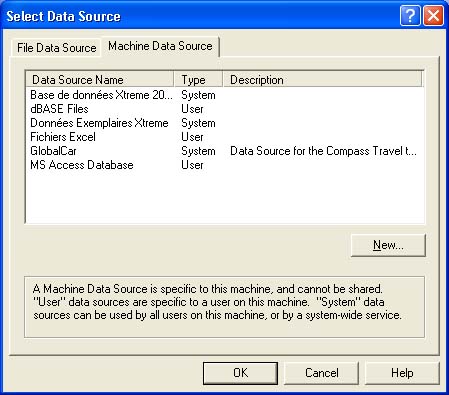Install Sybase Odbc Driver Windows 2008
Hi,I am trying to install Sybase ASE ODBC driver for Windows on one of our test machine.According to this 'http://www.sybase.com.sg/products/archivedproducts/odbc.
Problems can arise when deploying an application if it uses the same Open Database Connectivity (ODBC) drivers as other applications already installed on the same device. This article will discuss how developers can install custom ODBC drivers to ensure that your application's drivers are not being overwritten. When an application is deployed with ODBC on Windows, the ODBC driver must be installed into the Windows operating system. A DSN then can be created for the application to use to connect to the database. The alternative is to create a connection string without using a DSN but instead using the installed driver name.
As an example, consider an application that uses a SQL Anywhere database. A developer must consider the fact that other applications may also be using their own installations of SQL Anywhere on the same machine, without the end user knowing about it.


As such, you have to consider how to prevent your SQL Anywhere components from being updated or replaced by another third-party application, outside of your control. If another application that embeds SQL Anywhere is installed, it can potentially overwrite the ODBC driver your application installed with a different maintenance release or EBF build number, possibly incompatible with your application. The next time your application runs, the user could encounter problems that will be difficult to track down. Similarly, the installation of your program may overwrite an existing ODBC driver, potentially causing problems with other applications already installed on the machine.
Worse, uninstalling another application may remove the ODBC driver that your application relies on, stopping your application before it can even start. To prevent this, you can create your own custom driver name in the ODBC Registry on Windows, and make sure it always points to the SQL Anywhere ODBC driver that you install with your application. This way, you can ensure the location and specifics of the ODBC driver libraries that you want your application to use during normal operation, and you can ensure you will not affect the ODBC drivers of any other applications on the system if your application is updated or uninstalled. Manually Creating the Custom ODBC Driver. The following is a walkthrough of how to create your own custom ODBC driver entry by setting specific values in the Registry by using the regedit utility.
Once you understand how this works, you can use the windows API functions to open and write the specific keys you require to automate the process. The first thing you need to do is tell the ODBC Administrator that there is a new driver installed. You do this by adding a new string value to the 'ODBC Drivers' key of the Registry. Open 'HKEYLOCALMACHINE Software ODBC ODBCINST.INI ODBC Drivers' and add a new string value to this key. The name of the string value should be the name of the new driver you are creating.
In your case, use 'CustomDriver.' The value for this key should be 'Installed.' Figure 1: Adding the new ODBC driver, called 'CustomDriver,' to the Registry Next, you need to tell the ODBC Administrator where to find the ODBC driver files for your new driver when it performs two different activities.
The first tells the ODBC Administrator where to find the setup information used when a new DSN is created; the second tells the ODBC Administrator where to find the ODBC driver when an application refers to it in its connect string. To do this, add a new key to 'HKEYLOCALMACHINE Software ODBC ODBCINST.INI' with the same name as the previous key you created—in your case, 'CustomDriver.' This key will need two string values created for it, one called 'Driver,' and the other called 'Setup.' The values for these strings should be the name and location of the ODBC driver you are planning to use for your application. Figure 2: Telling the ODBC administrator where to find the ODBC driver files At this point, your custom driver is installed and you can begin creating data sources using it, or using the driver name in a connection where you don't want to specify a DSN (for example, 'Driver=CustomDriver;UID=DBA;PWD=SQL;ENG=demo'). If you run the ODBC Data Source Administrator application (odbcad32.exe), you will see your new driver included in the list of drivers when you add a new data source.
Odbc Access Driver Install
It will also appear on the 'Drivers' tab in the application. Figure 3: The new custom driver now appears when adding new data sources Page 1 of 2.